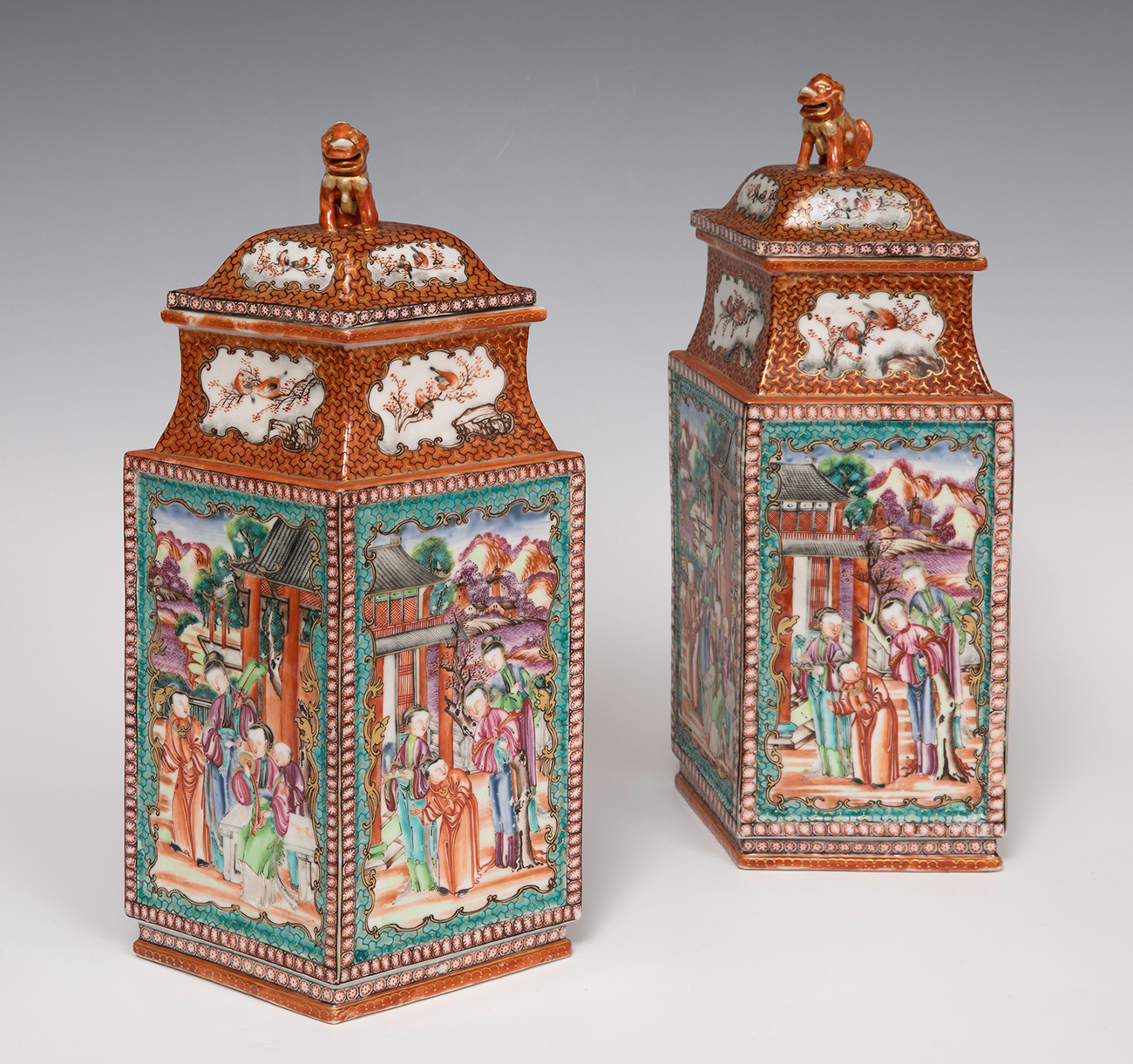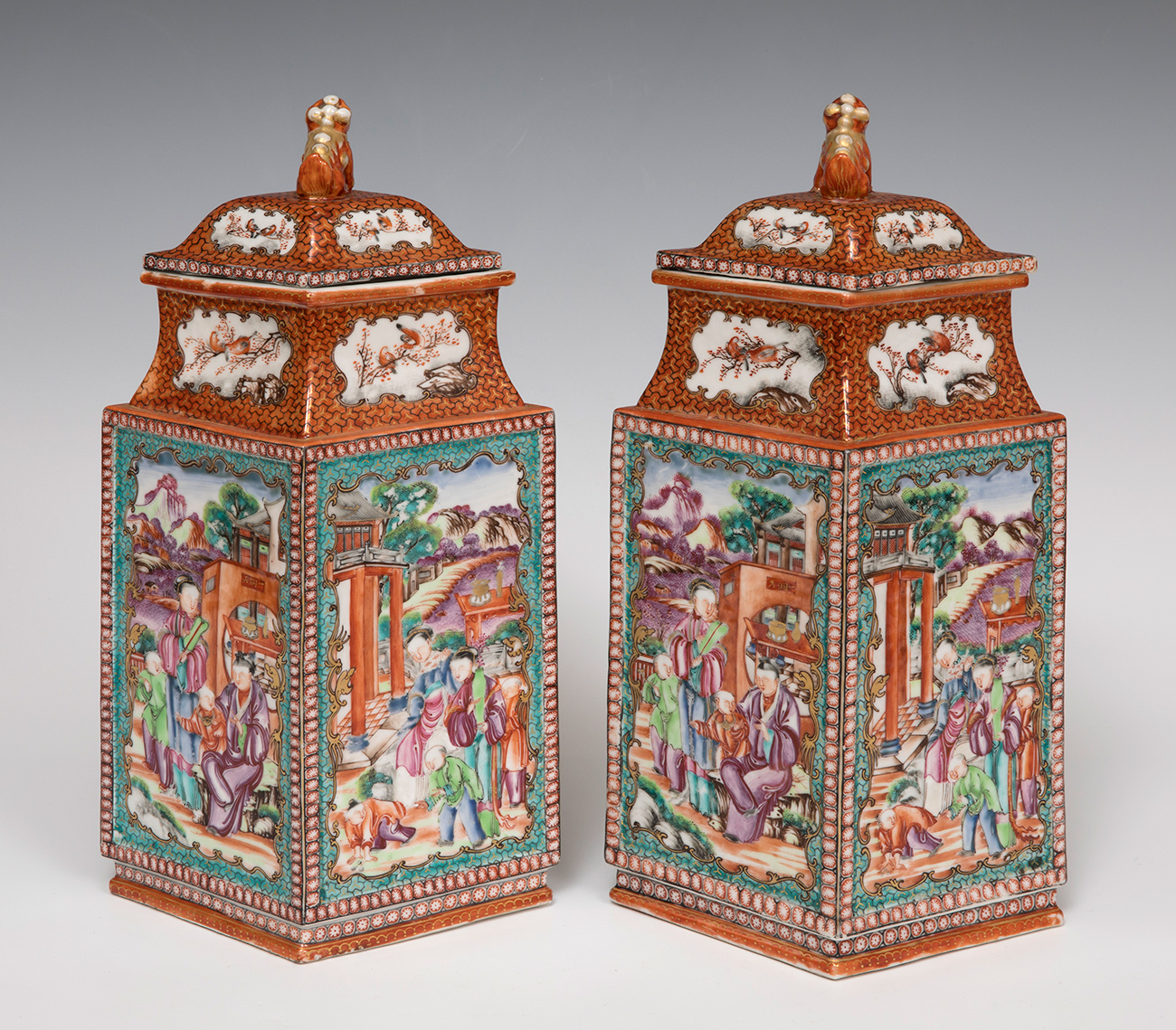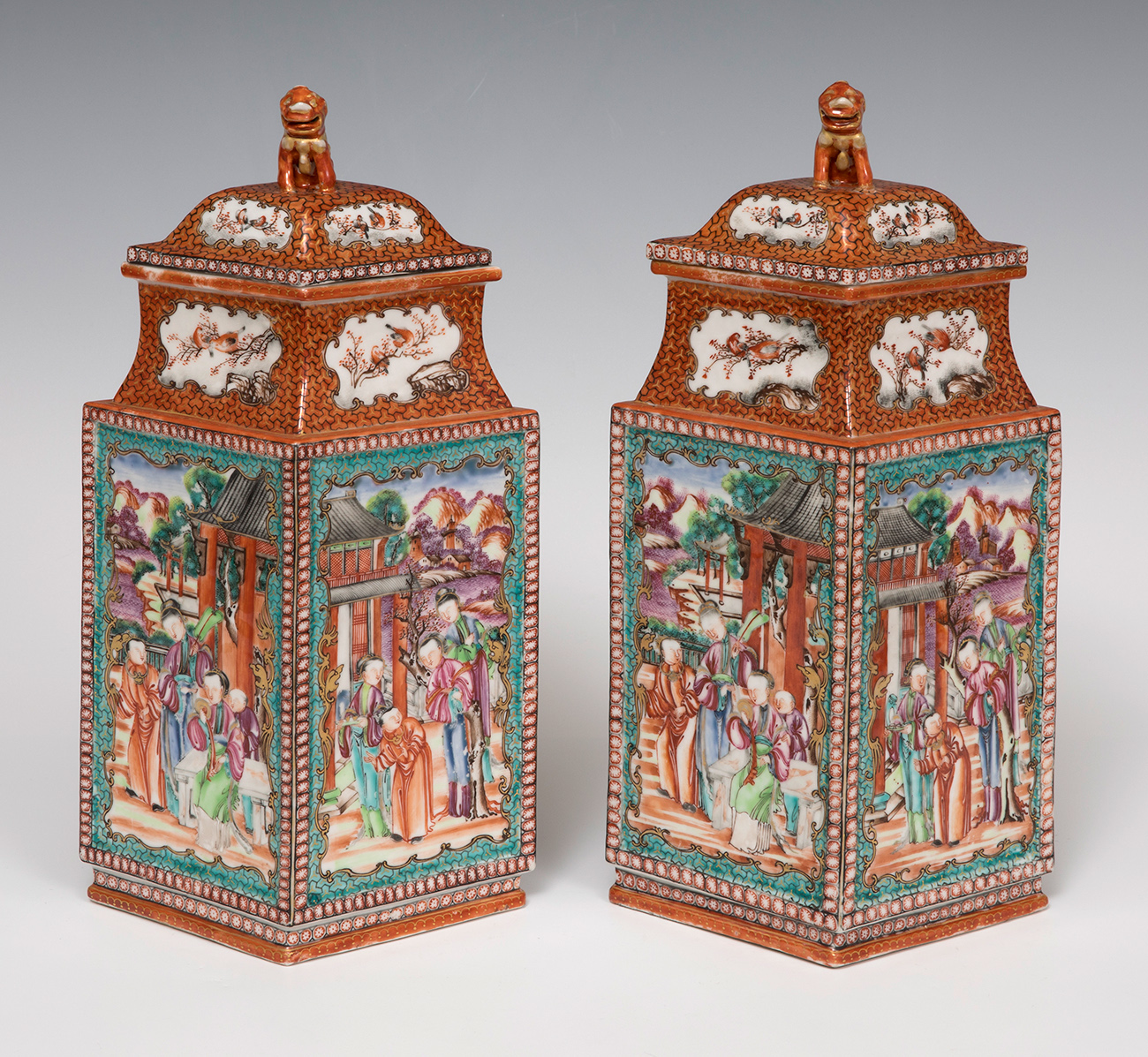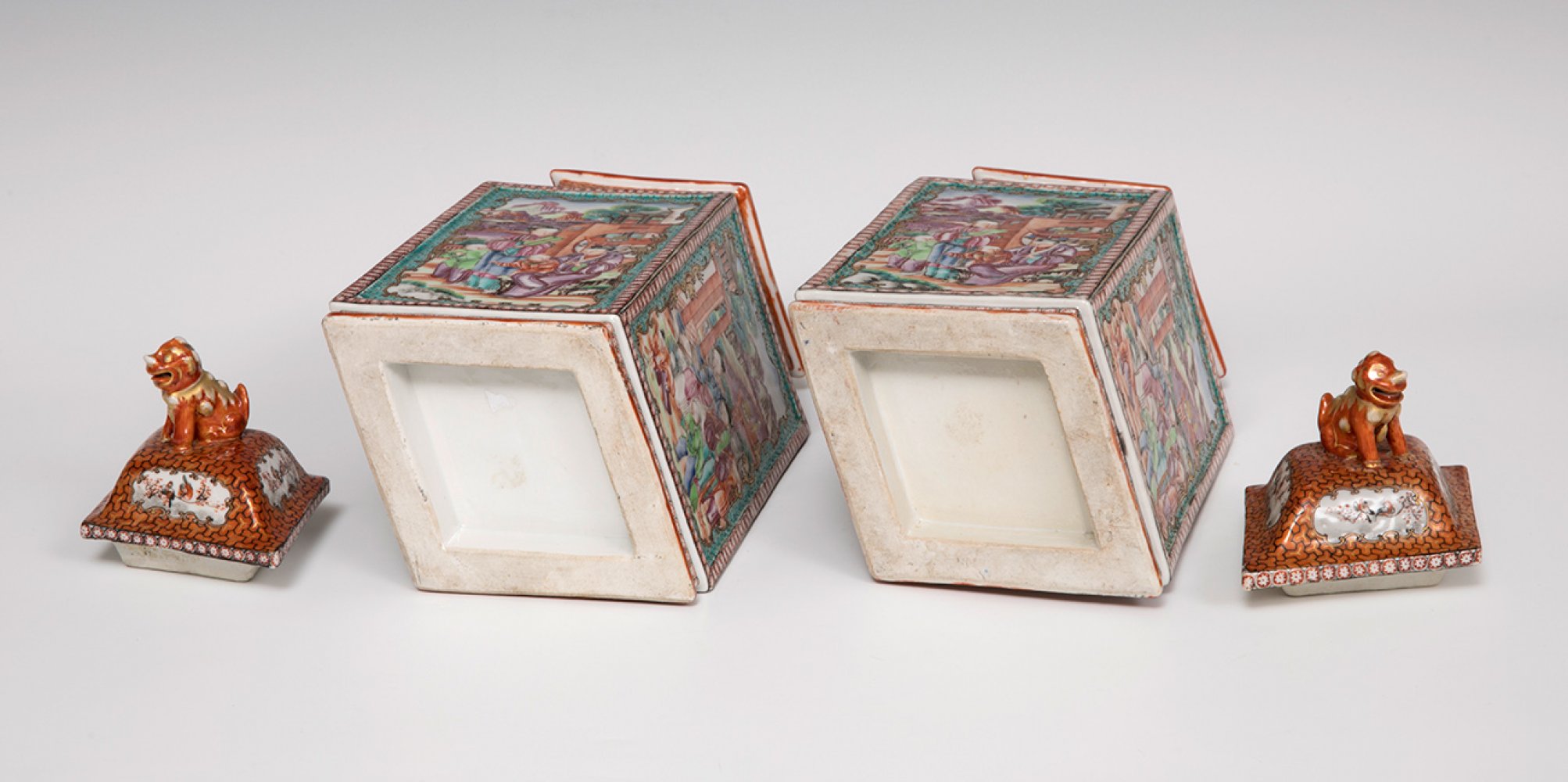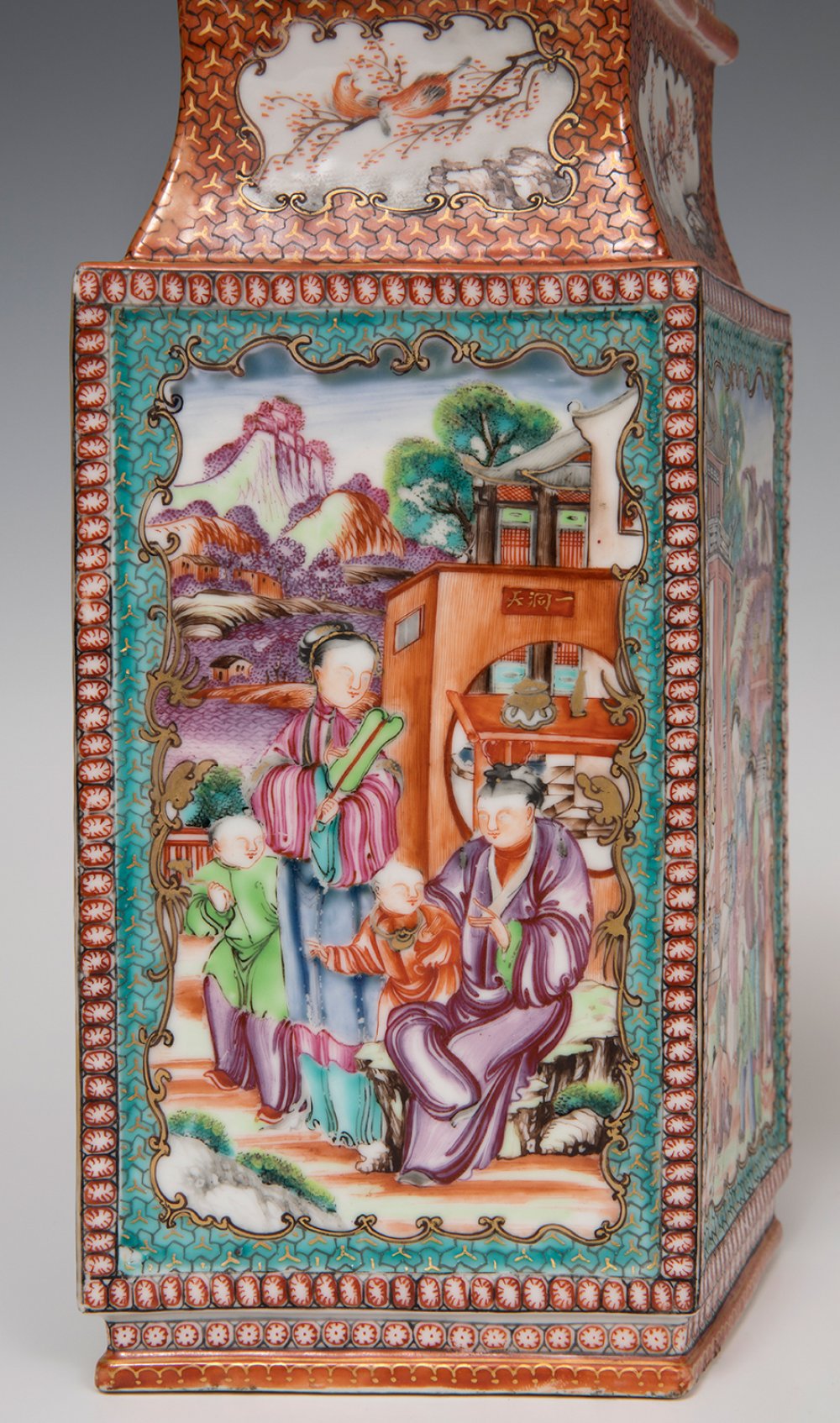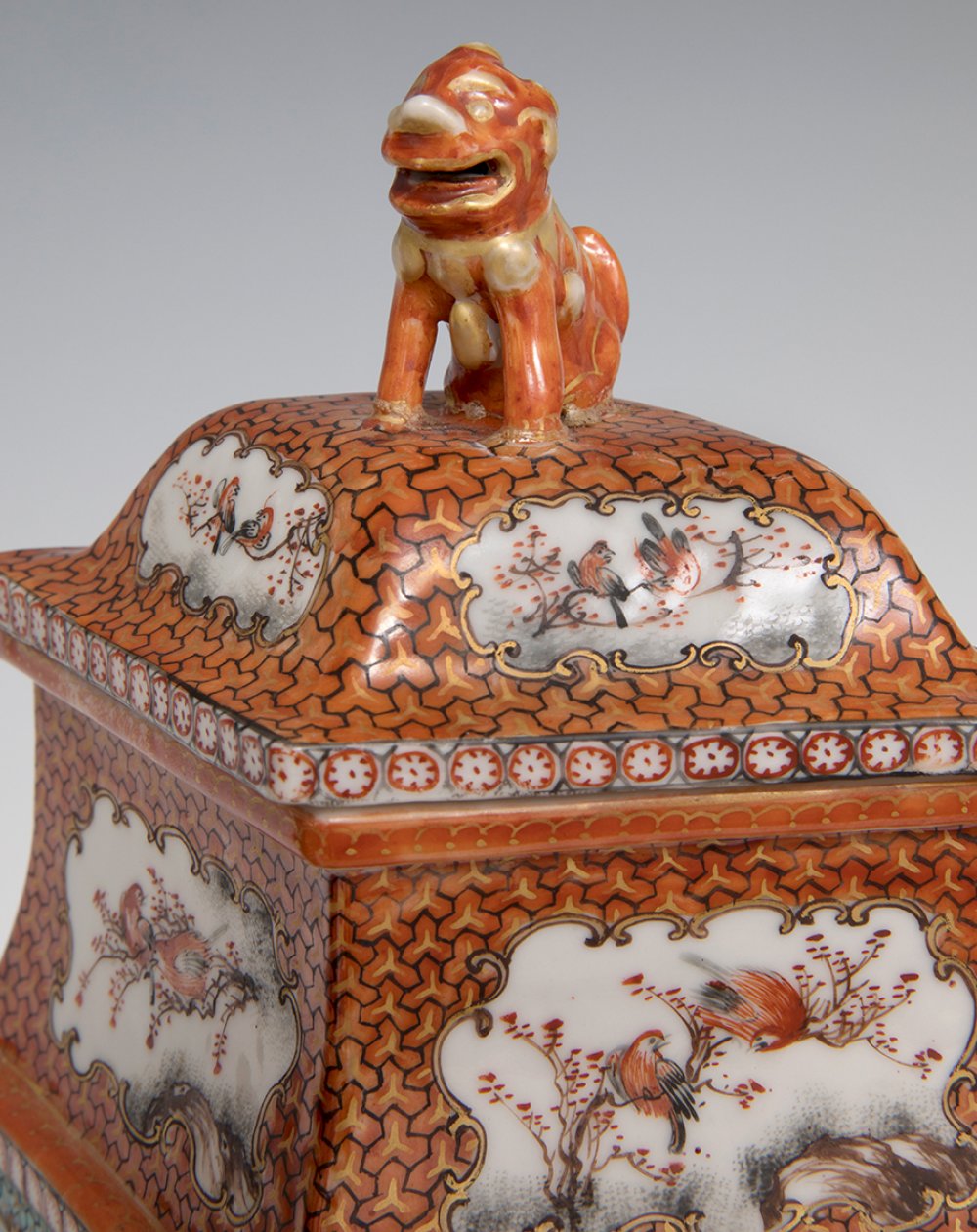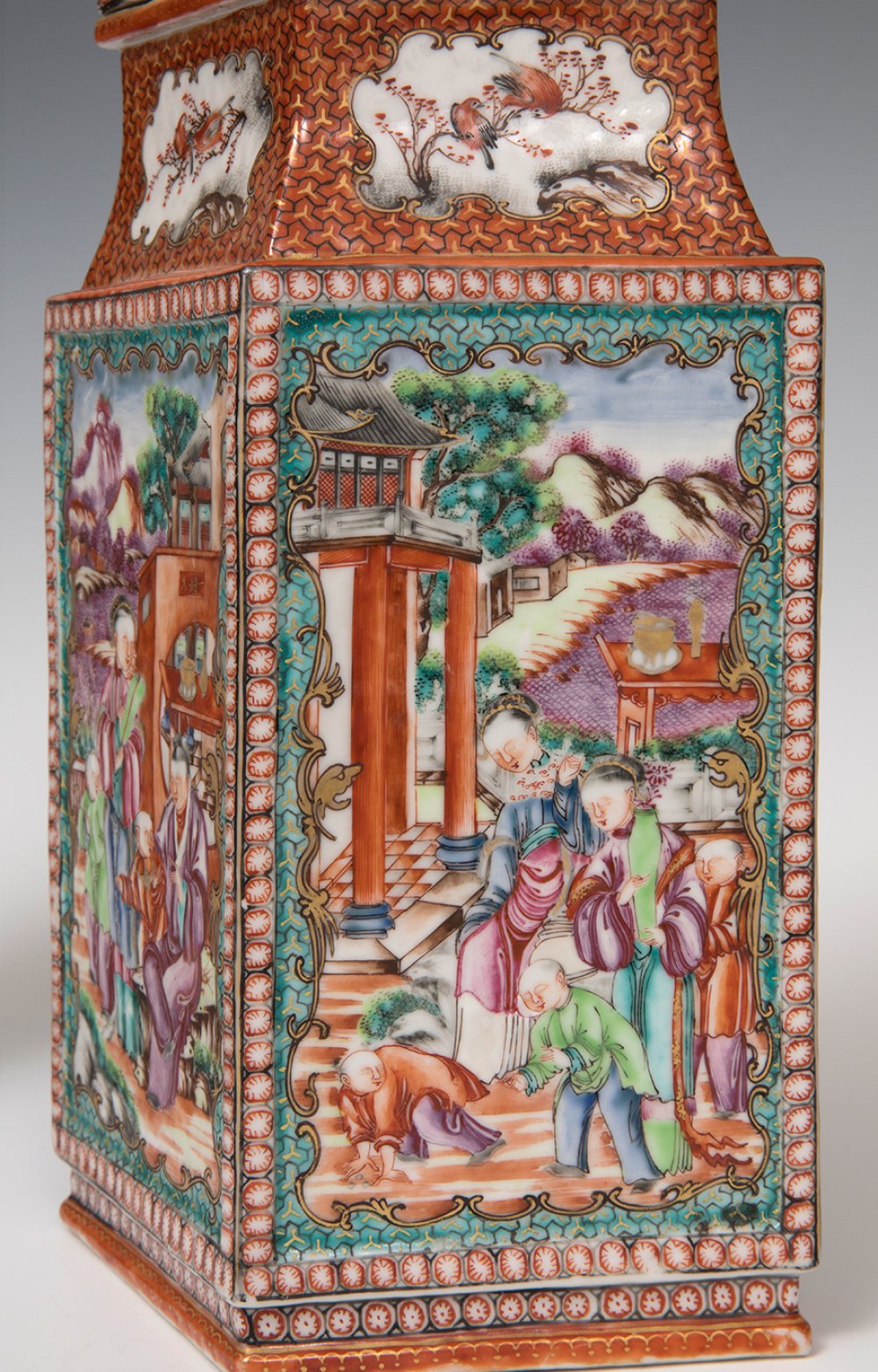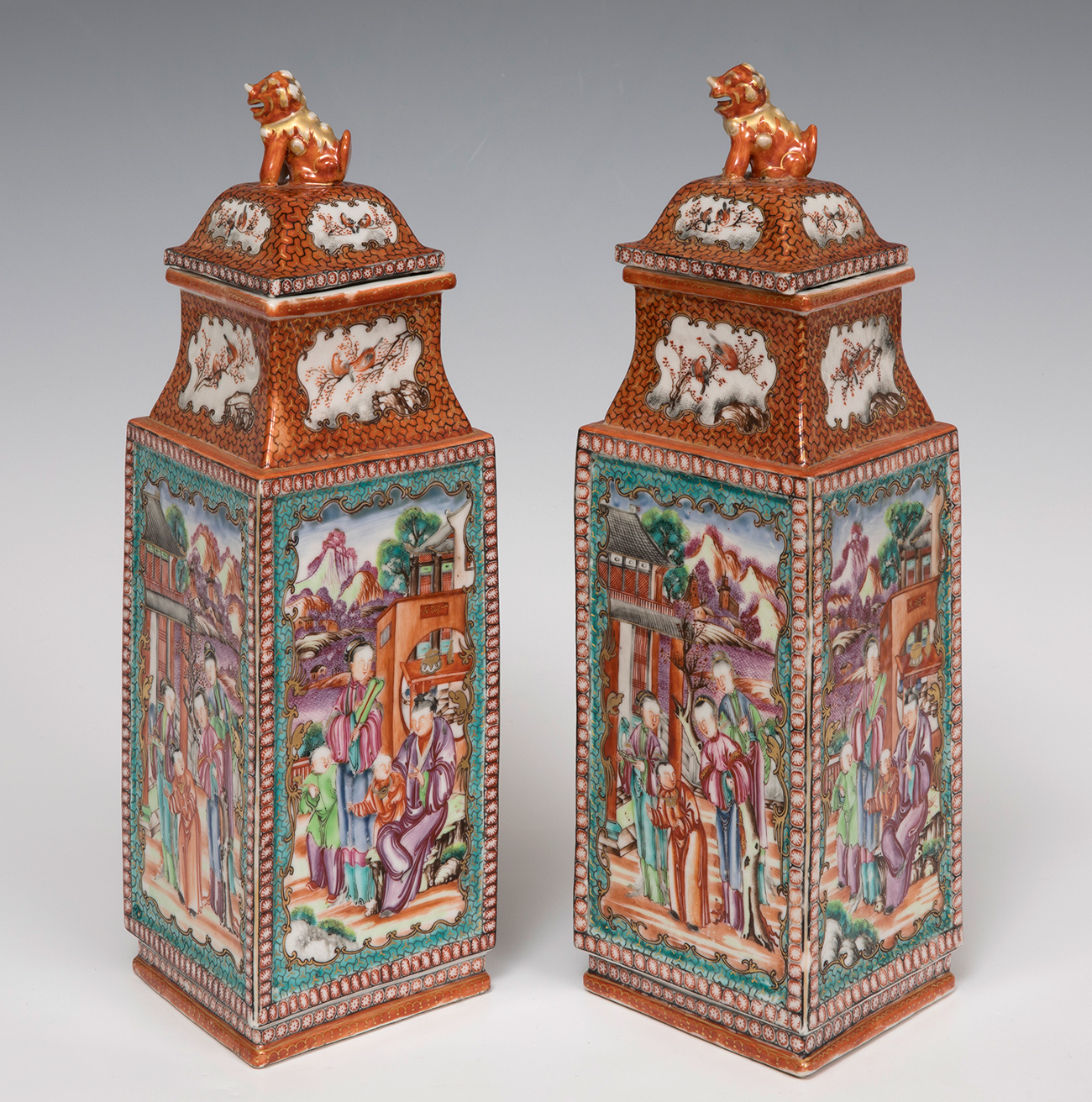7
Pair of lidded rhomboid vases; China, Jiaping period (1796-1820).Porcelain, pink family.
Porcelain, pink family.
Measurements: 34 x 18 x 11 cm.
Following the trend that Portugal had already started in the 16th century, most European countries began to develop an interest in Chinese porcelain, which soon became a real fashion. In the 17th century, Holland took the monopoly of the trade routes from Portugal, and throughout the 18th century, England, France, Sweden and Denmark began to demand these sought-after pieces, as they gained greater freedom to trade with the East by sea. As a result, from the 18th century onwards and coinciding with the reigns of the Yongzheng, Qianlong and Jiaqing emperors, the volume of Chinese porcelain ordered from Europe increased considerably, making "export porcelain" one of the most important sources of income for the Chinese economy at the time. It was precisely at this time that all kinds of shapes and designs began to be in demand from Europe, combining Western models with other Chinese ones: vases, figurines, tableware, toilet articles, etc., which placed the exquisite and hitherto enigmatic material of porcelain in the different areas of the everyday life of the European elite. Gradually, in Europe, a taste for Chinese genre decoration developed in parallel.
Undoubtedly closely linked to the growing interest in the Oriental world and exoticism, Rococo art experimented with and interpreted the "chinoiseries" for the decorative arts. In this prolific context, therefore, it is not difficult to understand the original rhomboidal shape of the curious pair of vases presented here. In keeping with its time, the dense decoration of this original pair of vases began to be used from 1760 onwards and was in great demand on the English market. Its striking colours, overlapping gilt latticework and the minuteness of its palatial Chinese scenes became the hallmarks of a style now known as 'Mandarin'. This decorative style was frequently copied by Western factories and remained popular until the first half of the 19th century. Such was the fashion of the time that even European wallpaper reproducing so-called 'mandarin scenes' has survived to the present day. A punch bowl from the same period with similar decoration to ours can be found in the Victoria & Albert Museum in London. Inventory no. C. 89-1912.
Porcelain, pink family.
Measurements: 34 x 18 x 11 cm.
Following the trend that Portugal had already started in the 16th century, most European countries began to develop an interest in Chinese porcelain, which soon became a real fashion. In the 17th century, Holland took the monopoly of the trade routes from Portugal, and throughout the 18th century, England, France, Sweden and Denmark began to demand these sought-after pieces, as they gained greater freedom to trade with the East by sea. As a result, from the 18th century onwards and coinciding with the reigns of the Yongzheng, Qianlong and Jiaqing emperors, the volume of Chinese porcelain ordered from Europe increased considerably, making "export porcelain" one of the most important sources of income for the Chinese economy at the time. It was precisely at this time that all kinds of shapes and designs began to be in demand from Europe, combining Western models with other Chinese ones: vases, figurines, tableware, toilet articles, etc., which placed the exquisite and hitherto enigmatic material of porcelain in the different areas of the everyday life of the European elite. Gradually, in Europe, a taste for Chinese genre decoration developed in parallel.
Undoubtedly closely linked to the growing interest in the Oriental world and exoticism, Rococo art experimented with and interpreted the "chinoiseries" for the decorative arts. In this prolific context, therefore, it is not difficult to understand the original rhomboidal shape of the curious pair of vases presented here. In keeping with its time, the dense decoration of this original pair of vases began to be used from 1760 onwards and was in great demand on the English market. Its striking colours, overlapping gilt latticework and the minuteness of its palatial Chinese scenes became the hallmarks of a style now known as 'Mandarin'. This decorative style was frequently copied by Western factories and remained popular until the first half of the 19th century. Such was the fashion of the time that even European wallpaper reproducing so-called 'mandarin scenes' has survived to the present day. A punch bowl from the same period with similar decoration to ours can be found in the Victoria & Albert Museum in London. Inventory no. C. 89-1912.
19th April - Concha Barrios Private Collection
Auktionsdatum
Ort der Versteigerung
Generelle Versandinformationen vom Auktionshaus verfügbar
Setdart offers Worldwide shipping
PICK UP IN ROOM: You can come and pick up your lots in our offices (Barcelona, Madrid or Valencia). At the moment of the withdrawal, you will be able to accept the current conditions of the lot by means of a document that you will sign.
YOU CAN SEND ANOTHER PERSON TO PICK UP: This person must present a signed authorization that you can find in our web page by accessing from BUY AT SETDART- LOGISTICS-DOWNLOAD AUTHORIZATION DOCUMENT. You can also send an e-mail with the requested data in AUTHORIZATION DOCUMENT to admin@setdart.com
Wichtige Informationen
22% buyer´s premium
18% buyer´s premium at www.setdart.com
AGB
The maximum period to pay the lots is 7 working days. You can pay either via bank transfer or with credit card through our platform www.setdart.com (we only accept VISA or Mastercard).
BUYER´S PREMIUM: 22% Hammer price + 21% VAT from the buyer´s premium
If your piece has more than 100 years, our Ministry of Culture requires an export certificate in order for the piece to leave the country. Note that if the piece goes inside the EU, there is no cost for the export certificate. If the piece goes outside the EU, there is a cost for the export certificate. You can find more information in our Ministry of Culture website: https://www.culturaydeporte.gob.es/en/cultura/patrimonio/exportacionimportacion/exportacion/tasas.html
INQUIRIES: admin@setdart.com
Setdart guides you through the entire process, from the time of award to the day you receive your lot. Our logistics team will be happy to manage your transport, and will advise you on the best shipping method with professionals from the sector used to handling works of art and jewelry.
WE OFFER WORLDWIDE DOOR TO DOOR SHIPPING
PICK UP IN ROOM: You can come and pick up your lots in our offices. At the moment of the withdrawal, you will be able to accept the current conditions of the lot by means of a document that you will sign.
YOU CAN SEND ANOTHER PERSON TO PICK UP: This person must present a signed authorization that you can find in our web page by accessing from BUY AT SETDART-LOGISTICS-DOWNLOAD AUTHORIZATION DOCUMENT. You can also send an e-mail with the requested data in AUTHORIZATION DOCUMENT to admin@setdart.com
SETDART IS NOT RESPONSIBLE FOR THE STATE OF THE PARTS ONCE THEY LEAVE OUR FACILITIES. MRW SHIPMENTS: Once the payment is made, your lot will be packed for shipment, the logistics department will send you an e-mail notifying you of the day it leaves our warehouse, changes of address cannot be made after receiving this e-mail.
INSURANCE INCIDENTS: Coverage for the value of the auction up to 3000 ? per shipment, if the value of the auction is higher, Setdart will send you a quote including the additional insurance. The insurance company WILL NOT BE RESPONSIBLE FOR THE SHIPMENT THAT EXCEEDS THAT AMOUNT AND IS NOT FULLY INSURED. MRW INCIDENTS: Maximum notification 48 hours after receipt, after which the insurance company WILL NOT BE RESPONSIBLE AND NO CLAIMS WILL BE ACCEPTED.
E-MAIL LOGISTICS: logistica@setdart.com
PICK UP YOUR MESSAGES: You can send your own messaging, prior notice via e-mail that your shipment is ready, please note 3 or 4 days in advance. This type of shipment is packaged so Setdart will provide you with a quote.
EXPENSES FOR STORAGE: We inform you that if the purchased lot is not picked up within a month, you will be charged 30€ per week per lot. Setdart Online S.L., owner of the web site "setdart.com", "setdart.net" and "setdart.org", acts as a company of Spanish nationality inscribed in the Volume 36955, sheet 182, page B-293056 of the Mercantile Registry, with registered office at Calle Aragó

















